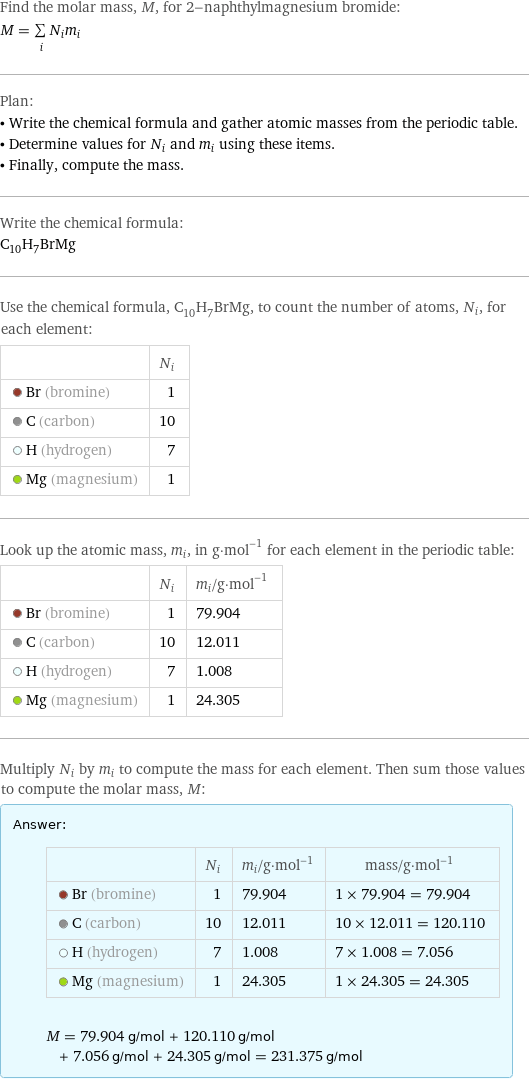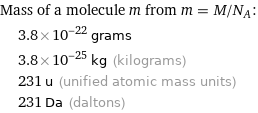Input interpretation

2-naphthylmagnesium bromide | molar mass
Result

Find the molar mass, M, for 2-naphthylmagnesium bromide: M = sum _iN_im_i Plan: • Write the chemical formula and gather atomic masses from the periodic table. • Determine values for N_i and m_i using these items. • Finally, compute the mass. Write the chemical formula: C_10H_7BrMg Use the chemical formula, C_10H_7BrMg, to count the number of atoms, N_i, for each element: | N_i Br (bromine) | 1 C (carbon) | 10 H (hydrogen) | 7 Mg (magnesium) | 1 Look up the atomic mass, m_i, in g·mol^(-1) for each element in the periodic table: | N_i | m_i/g·mol^(-1) Br (bromine) | 1 | 79.904 C (carbon) | 10 | 12.011 H (hydrogen) | 7 | 1.008 Mg (magnesium) | 1 | 24.305 Multiply N_i by m_i to compute the mass for each element. Then sum those values to compute the molar mass, M: Answer: | | | N_i | m_i/g·mol^(-1) | mass/g·mol^(-1) Br (bromine) | 1 | 79.904 | 1 × 79.904 = 79.904 C (carbon) | 10 | 12.011 | 10 × 12.011 = 120.110 H (hydrogen) | 7 | 1.008 | 7 × 1.008 = 7.056 Mg (magnesium) | 1 | 24.305 | 1 × 24.305 = 24.305 M = 79.904 g/mol + 120.110 g/mol + 7.056 g/mol + 24.305 g/mol = 231.375 g/mol
Unit conversion

0.23137 kg/mol (kilograms per mole)
Comparisons

≈ 0.32 × molar mass of fullerene ( ≈ 721 g/mol )

≈ 1.2 × molar mass of caffeine ( ≈ 194 g/mol )

≈ 4 × molar mass of sodium chloride ( ≈ 58 g/mol )
Corresponding quantities

Mass of a molecule m from m = M/N_A: | 3.8×10^-22 grams | 3.8×10^-25 kg (kilograms) | 231 u (unified atomic mass units) | 231 Da (daltons)

Relative molecular mass M_r from M_r = M_u/M: | 231